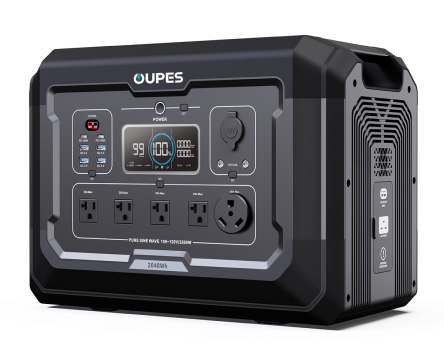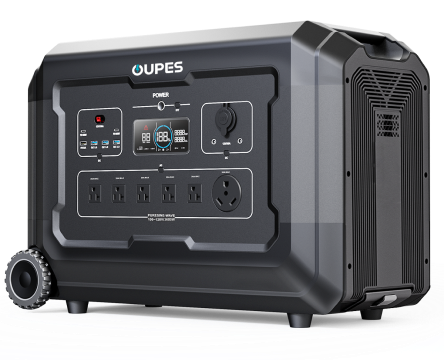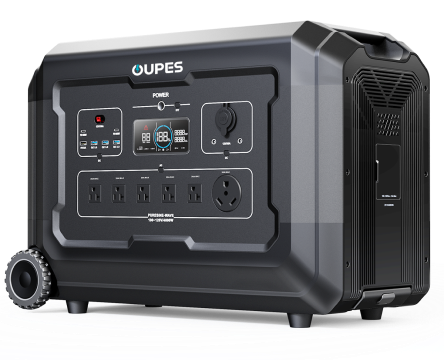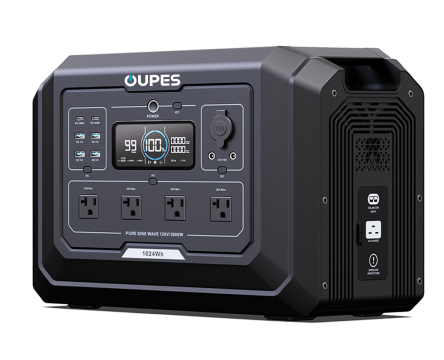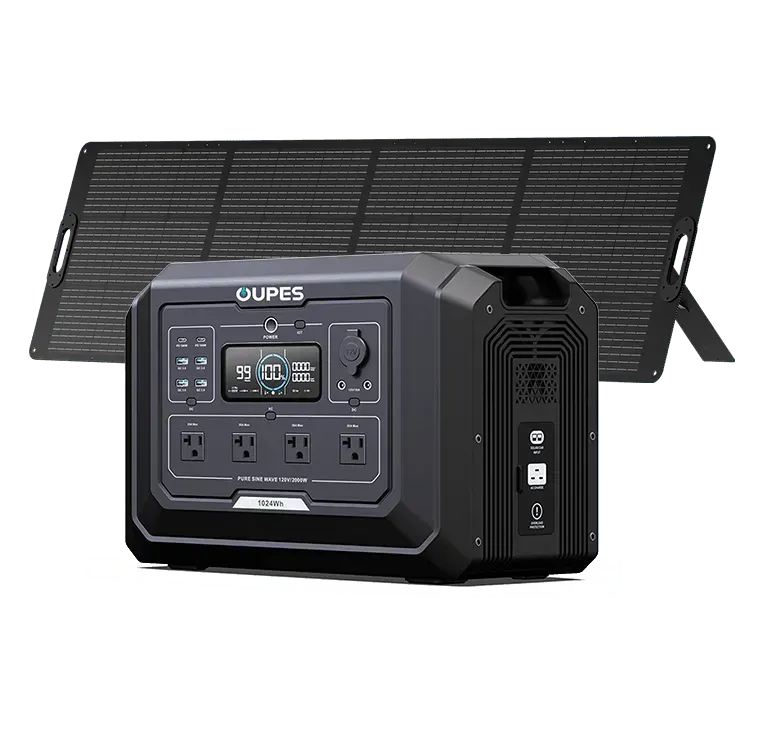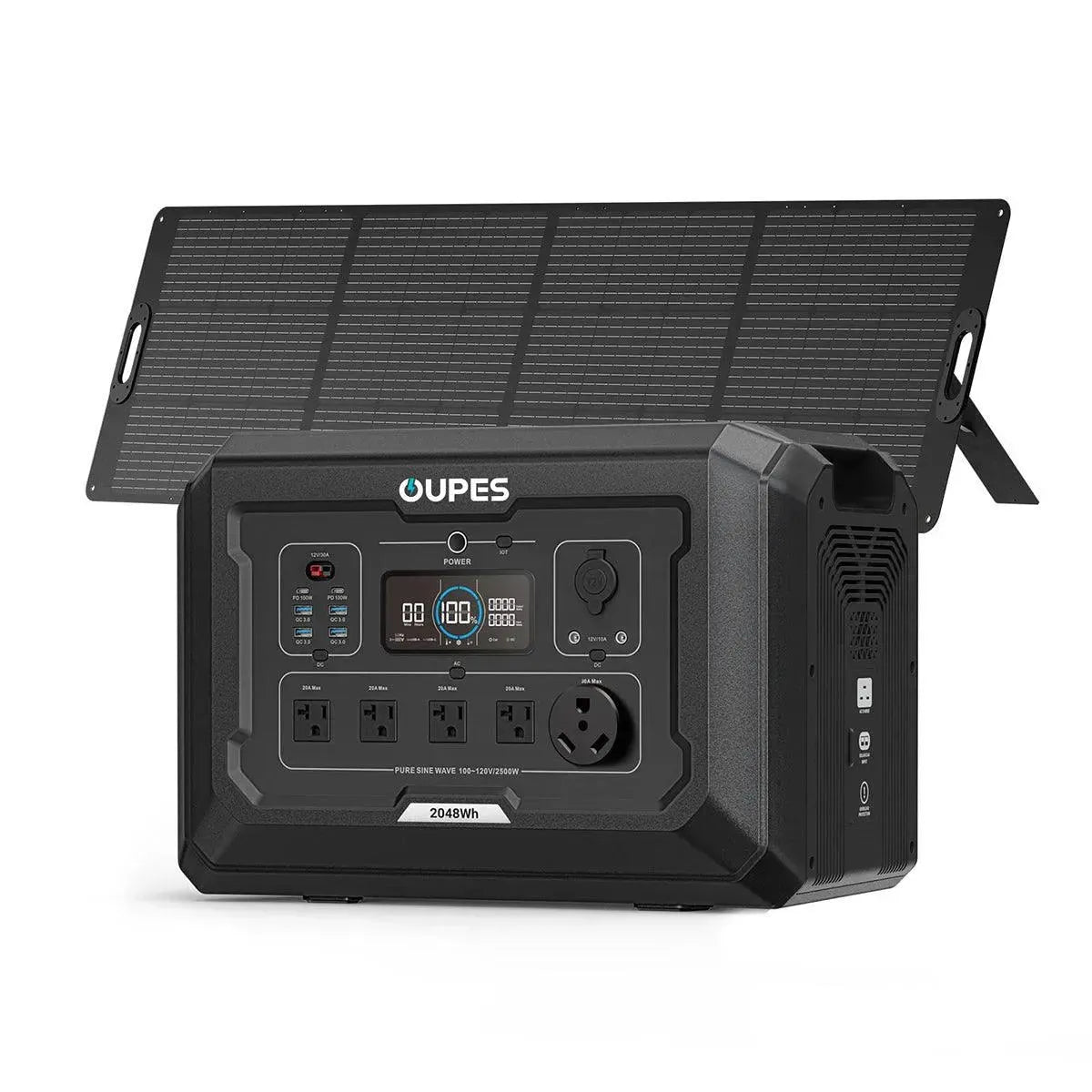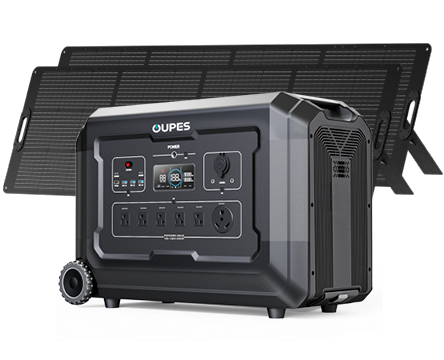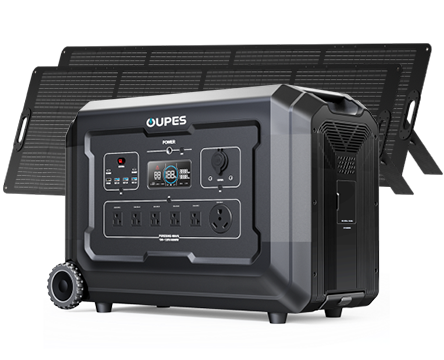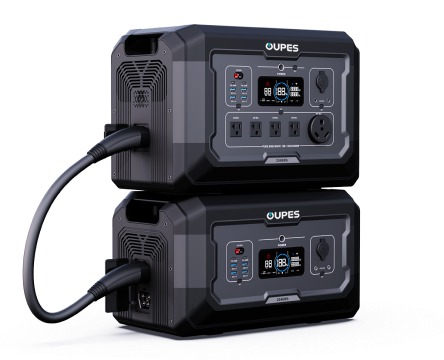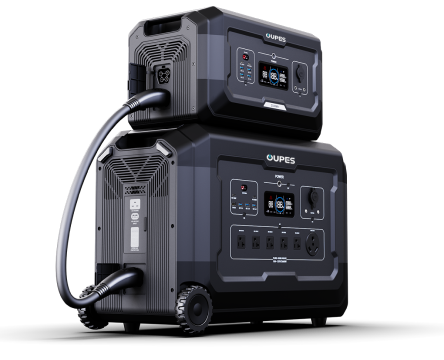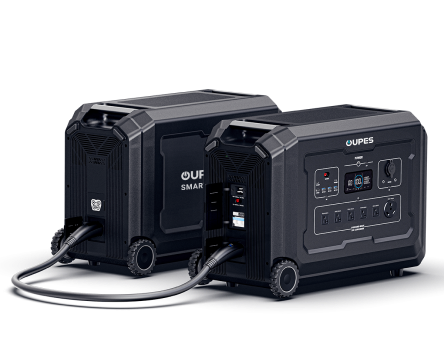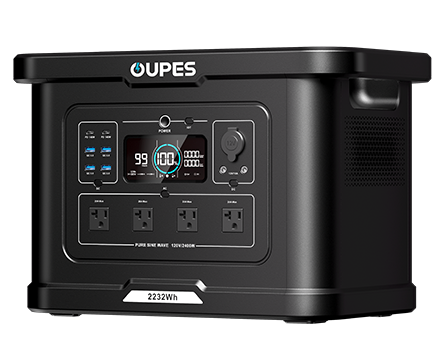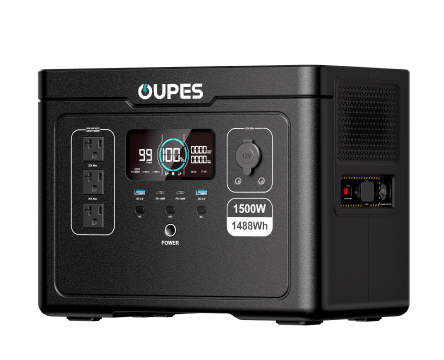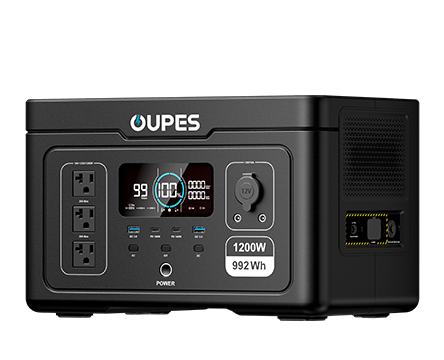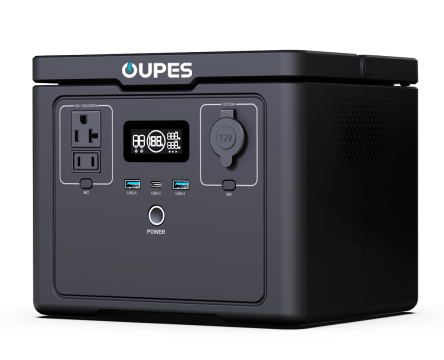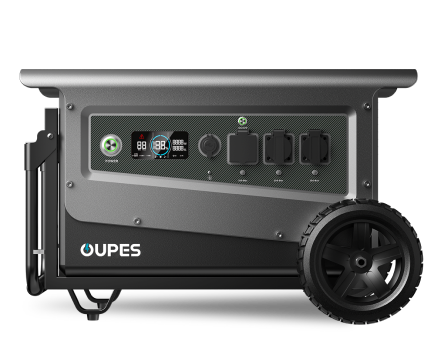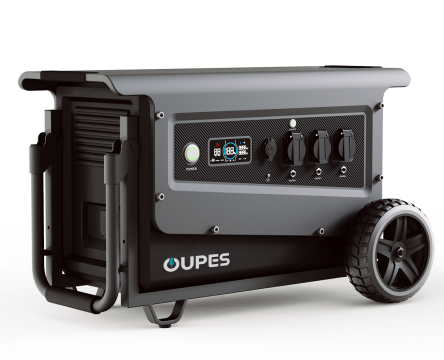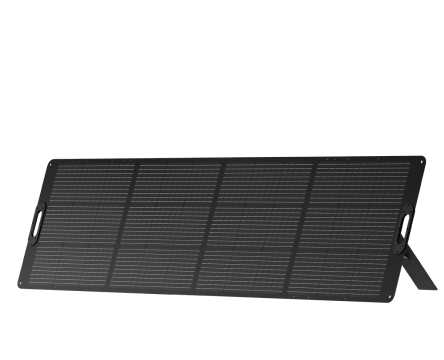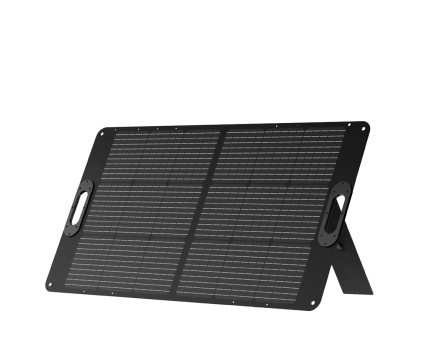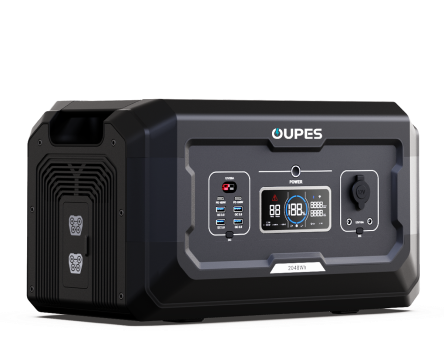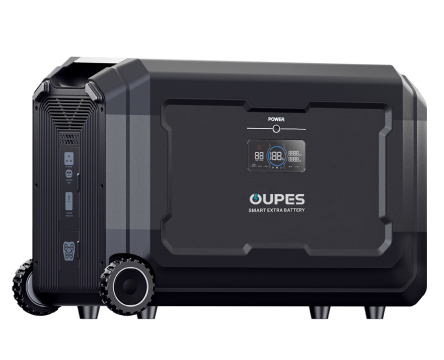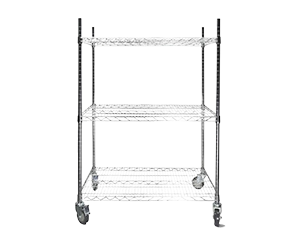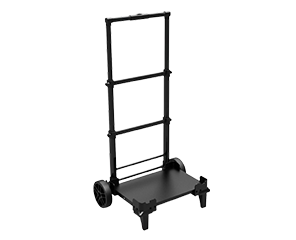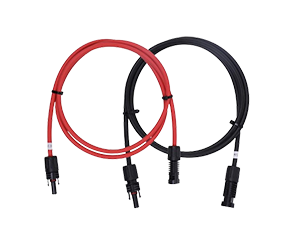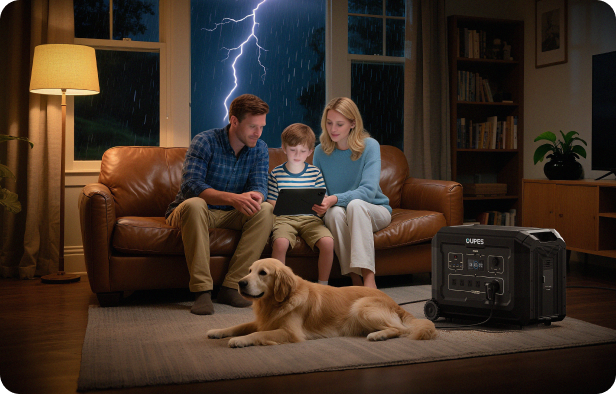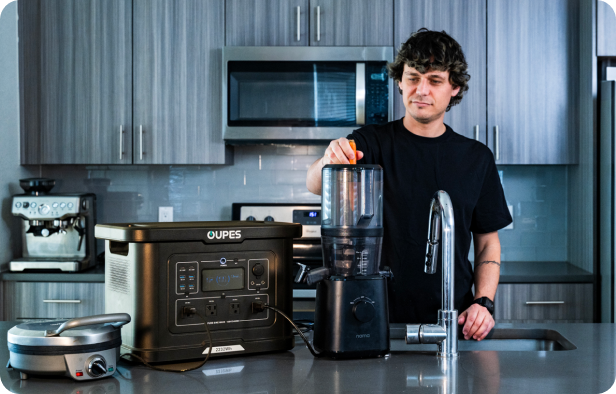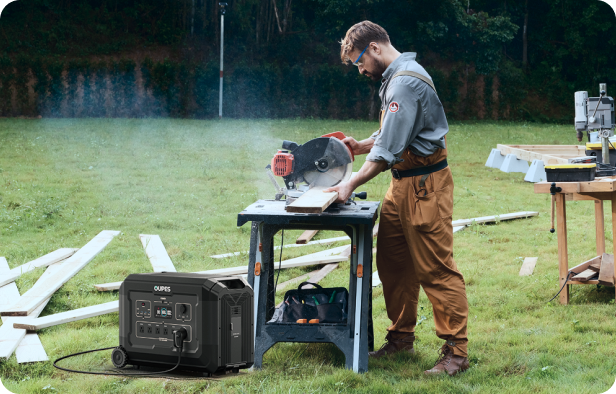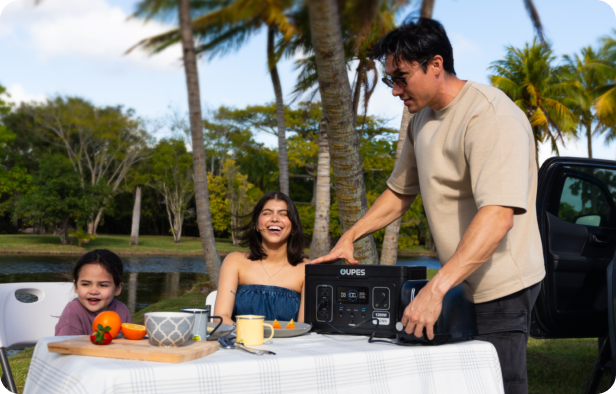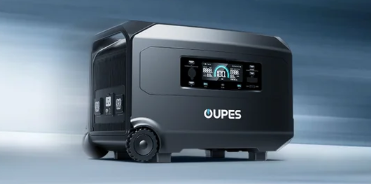
Introduction: Understanding a 6000-Watt Power Station
A 6000-watt power station represents a high-capacity portable energy source capable of running nearly any household appliance or heavy-duty equipment. Whether you’re preparing for emergencies, running off-grid power tools, or managing backup energy during blackouts, a 6000W system provides the versatility to handle it all.
In the realm of solar generators and portable power stations, wattage directly reflects how much power the unit can deliver at once. With 6000 watts of output, you move beyond basic electronics and enter the realm of full household operation — refrigerators, space heaters, air conditioners, and even small workshops can run simultaneously.
What Does 6000 Watts Mean?
1. Rated Power vs Surge Power
The rated power (6000W) refers to the continuous power the station can deliver, while surge power describes short bursts of higher output needed to start motors or compressors. For example, a refrigerator may require a surge of 1500–2000W at startup but operate at 600W continuously.
2. Wattage and Appliance Compatibility
Every electrical device consumes a certain number of watts. The higher the wattage, the more energy it draws. Knowing your device’s power rating helps determine whether a 6000W power station can handle multiple loads simultaneously.
What Can a 6000W Power Station Run?
With 6000W of available continuous output, such a power station can easily support essential household, outdoor, and professional equipment. Here’s an overview of what you can expect to run efficiently:
Household Appliances
- Refrigerator or freezer (600–1200W)
- Microwave oven (1000–1500W)
- Electric kettle or coffee maker (1000–1500W)
- Washing machine (500–1200W)
- Window air conditioner (1000–1800W)
- Space heater (1500–2000W)
- Lighting systems and ceiling fans (100–500W total)
Electronics and Office Equipment
- Desktop computer and monitor (200–400W)
- Television (100–300W)
- Wi-Fi router, phone chargers, and laptops (under 100W total)
- Home theater system (200–600W)
Outdoor and RV Equipment
- RV air conditioner (1500–2000W)
- Electric grill or induction cooker (1500–2000W)
- Camping refrigerator (60–150W)
- Outdoor lighting and entertainment setups (300–500W)
Power Tools and Construction Equipment
- Electric drill (500–900W)
- Circular saw (1400–1800W)
- Air compressor (1500–3000W startup)
- Welding machine (3000–5000W)
Real-Life Scenarios and Usage Cases
1. Home Backup During Outages
When the grid goes down, a 6000W power station can keep your refrigerator, lighting, Wi-Fi, and a few appliances running seamlessly for several hours. This ensures that essentials like food preservation, communication, and heating remain uninterrupted.
2. Off-Grid Cabins and RV Living
For off-grid or mobile lifestyles, a 6000W power station provides enough energy for complete living — cooking, heating, charging, and entertainment. When paired with solar panels, it can sustain extended independence from the grid.
3. Construction Sites and Remote Work
Contractors and technicians often rely on portable energy sources in areas without grid access. A 6000W system can handle multiple tools at once, from drills to compressors, making it ideal for off-site work.
4. Outdoor Events and Emergency Services
For large gatherings or emergency shelters, a 6000W power station supports lighting, medical devices, and communication systems safely and quietly — without the fumes or noise of a gas generator.
Runtime Estimation: How Long Can It Power Devices?
The runtime of any power station depends on its battery capacity (measured in watt-hours, Wh) and the total load connected. Use the formula:
Runtime (hours) = Battery Capacity (Wh) ÷ Load Power (W)
Example Calculation
If a 6000W power station features a 10,000Wh (10kWh) battery:
- Running a 1000W appliance = 10 hours of runtime
- Running a 3000W load = ~3.3 hours of runtime
- Running a 5000W load = ~2 hours of runtime
However, efficiency losses (typically 10–15%) should be considered, slightly reducing actual runtime.
6000W Power Station vs Smaller Units
Here’s a quick comparison of what different wattage systems can handle:
| Power Station Rating | Example Use Cases | Suitable For |
|---|---|---|
| 1000W | Phones, laptops, LED lights, mini-fridge | Camping, basic travel |
| 3000W | Refrigerator, TV, small kitchen appliances | Small RVs, short-term backup |
| 6000W | Full kitchen, AC, space heater, workshop tools | Home backup, off-grid cabins, construction sites |
6000W and Solar Charging Systems
To sustain long-term use, pairing a high-output power station with solar panels provides renewable recharging capacity. For instance, connecting multiple 400W solar panels can deliver fast recharging rates of 2000–2400W under optimal sunlight.
In practice, this means that even heavy-use scenarios like powering a refrigerator and air conditioner can be maintained daily — as long as daylight charging replenishes the energy consumed overnight.
FAQ
1. Can a 6000W power station power a whole house?
It can cover most essential appliances in a small home — refrigerators, lights, computers, fans, and low-wattage heating devices. However, powering an entire house indefinitely would require larger storage capacity or multiple units working in parallel.
2. Can I run an air conditioner with a 6000W power station?
Yes. Most window and portable AC units range from 1000W to 1800W, well within capacity. Central air systems, however, often exceed that range.
3. How long does a 6000W power station last on one charge?
That depends on its energy storage (Wh). For instance, a 10,000Wh battery running a 1000W appliance lasts roughly 10 hours. Higher loads shorten runtime proportionally.
4. Can I use solar panels to charge a 6000W power station?
Yes. Many high-capacity stations integrate MPPT solar controllers allowing solar recharging up to 2000W or more, perfect for off-grid sustainability.
5. Is a 6000W power station safe for indoor use?
Absolutely. Unlike gas generators, electric or solar power stations emit no fumes and operate quietly, making them ideal for indoor or RV environments.

